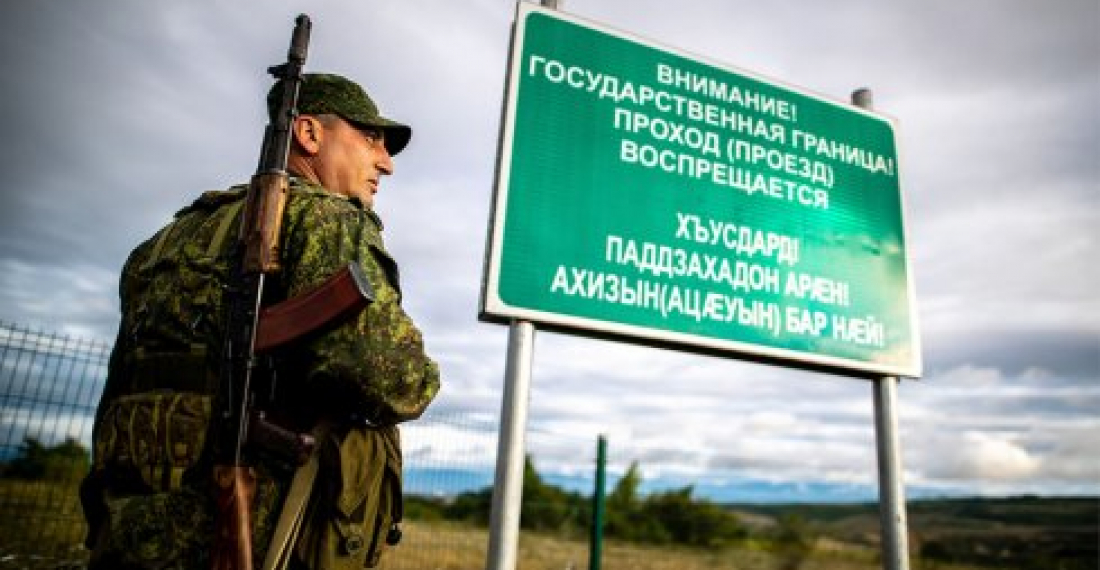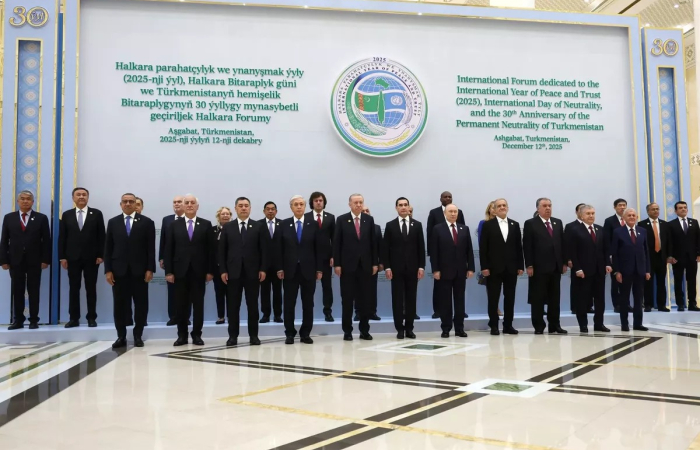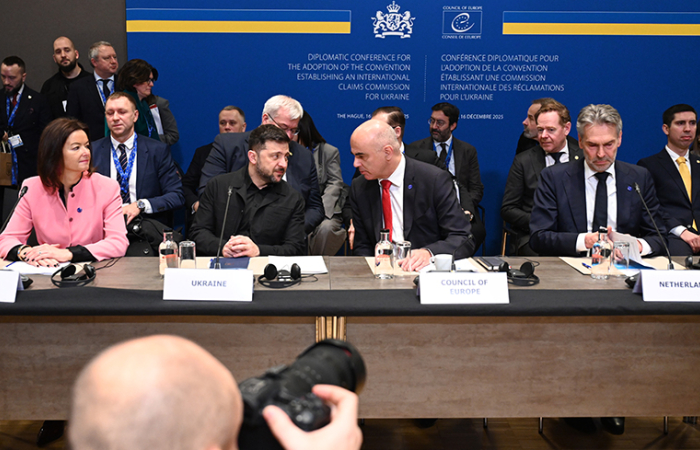Those who wonder why there are constant problems around South Ossetia need to look at the conditions the Russians have created after their recognition of the territory's independence in 2008.
This analysis is prepared by the Research Team at Commonspace.eu
Background
Russia's actions and intentions in the South Caucasus are again under question following recent developments in Georgia, and particularly around the territory of South Ossetia.
South Ossetia, a territory with a population of around 53,000 according to a 2015 census, seceded from Georgia in the early 1990s, in the immediate aftermath of the collapse of the Soviet Union, but its independence was not recognised by the international community. Under President Eduard Shevardnadze, Georgia made several attempts at reconciliation, and tension between Tbilisi and its breakaway region eased, with people moving freely from one side to the other. The situation however dramatically deteriorated when Mikheil Saakashvili took over as president of Georgia in 2004 and tension erupted into an all-out conflict in August 2008, with Russia intervening on behalf of the Ossetians. The short but bloody war ended with a truce negotiated by the then French Presidency of the European Union, which saw President Sarkozy shuttling between Moscow and Tbilisi. The agreement, which was never honoured by Russia, stipulated a return of forces to the status quo ante. Instead shortly afterwards Russia unilaterally recognised the independence of South Ossetia, as well as of the other Georgian breakaway region, Abkhazia. Russia has been steadily militarising the two territories since.
Recognition and borderisation
Russia's recognition of the independence of Abkhazia and South Ossetia in 2008 was a game changer for the Caucasus Region, and for the whole post-Soviet space. It defied what had up to then been the tacit understanding, of maintaining, at least nominally, the territorial integrity of the USSR Union republics. The recognition opened a new can of worms, resulting in the later Russian annexation of Crimea, and hardening positions on the Nagorno-Karabakh conflict.
There were however two nuances in the Russian policy whose significance were not immediately fully understood.
The first was that Russia, insisted Abkhazia and South Ossetia territory be extended to the lines reflected in Soviet military maps, rather than as they had de facto existed when they seceded. This was in complete violation of the Sarkozy-brokered cease fire agreement, which required Russian forces to withdraw to the status quo ante. Instead Russian troops and their local proxies moved into areas that had hitherto been under Tbilisi control, and mainly populated by ethnic Georgians, such as Akhalgori and Kodori.
The second was borderisation. Western experts attending a meeting at the Russian Foreign Ministry in December 2008 were stunned to be told about Russian intentions to build a physical border around the difficult mountainous terrain of South Ossetia. The Russian diplomats appeared more concerned about the cost of the venture rather than its political and humanitarian considerations.
The introduction of these two elements on top of the diplomatic recognition, guaranteed continued ongoing tensions for a very long time, something that the Russians could not have been unaware of. This suited Russia's objectives. Russian recognition of Abkhazia and South Ossetia was never an end in itself, but a tool to a wider objective of maintaining pressure on Georgia in order to ensure control of the South Caucasus. This continues to be the case, and the incidents that flare up from time to time should not be seen in isolation but as part of this wider strategy. The Russian position is clear - Georgia must not be allowed to develop an independent foreign policy, must be hindered in its efforts at European integration, and must, at all costs, be prevented from joining NATO. This has been pretty much the Russian position since 1992, give or take a few good will gestures every now and then thrown in as sweetners to Tbilisi.

Dimitri Medoev presents the credential as South Ossetia first Ambassador to Russia following the 2008 recognition.
Recent developments
The Georgian Dream government, in power since 2012, heeding advice from friendly western governments, have taken a pragmatic approach to relations with Russia. This eased tensions somewhat. But the Kremlin continues to use all the tools in its toolbox to maintain pressure and keep Georgia "in line". Two sets of developments in the last few months need to be seen in this context.
The first was the incident around the appearance of a hard line Russian communist MP in the Georgian parliament in June. That this triggered an emotional reaction among some MPs and some sections of the public was not a surprise, despite the mitigating circumstances. What was surprising was the reaction of the Kremlin, and of President Putin himself, resulting in the cut of air links between Russia and Georgia on the eve of the tourist season. The speed and the severity of the reaction were to say the least, unusual.
On-going shenanigans around South Ossetia
This last episode in the diplomatic spat between Moscow and Tbilisi has been accompanied by an increase in tension on the administrative boundary line between South Ossetia and Tbilisi-administered territory. Russia's decision to continue with the building of a fence around what it claims to be South Ossetia continues to cause genuine human suffering to those who find themselves separated by this policy. In recent days, the area around Chorchana-Tsnelisi has turned into a flashpoint.
A report published by the European Union Monitoring Mission, lists some of the developments. It says:
"Beginning in January this year the Mission noted paint markings on trees in the area between Tsnelisi and Chorchana. The Mission assesses these as a feature of 'borderisation'. However, no actor has claimed responsibility for these markings.
Between 20 and 24 August a new Georgian observation post was established on the outskirts of the village of Tsnelisi by the MIA Special Tasks Department. According to EUMM findings, the post is located some 240 metres away from the ABL and on Tbilisi-administered territory (TAT) in accordance with the traditionally understood run of the ABL in that area.
Security actors from South Ossetia have in the last week established new positions and installed a number of borderisation features, including 'green signs' and flags on the TAT side of the ABL as traditionally understood in this area. The features are up 1.3 kilometres beyond the ABL. In the meantime Georgian MIA units have also reinforced their presence in the Chorchana forest area.
The Mission notes a substantial, continuing presence of armed security actors in the Chorchana-Tsnelisi area. The establishment of multiple new positions across the ABL, and the concentration of armed personnel increases the potential for encounters and constitutes a risk to stability."
The incidents quickly spilled over into a larger picture, with the South Ossetian authorities restricting the movement of people across the Administrative Boundary Line. This is also documented in the EUMM report. It says:
"The Mission also notes that two crossing points at the South Ossetian ABL - Odzisi and Sinaguri - have remained closed since 20:00 on 4 September 2019. No concrete indication has been given as to when they will reopen, while statements from security actors in South Ossetia have linked the closures to the ongoing developments in the Chorchana-Tsnelisi area. The Mission sees these measures as harmful restrictions of movement, which negatively impact commuters from both sides of the ABL, especially affecting the population living in or regularly commuting to the Akhalgori valley. The closed crossings points, according to regular Freedom of Movement Surveys conducted by EUMM, would typically see around 400 crossings daily in both directions."
Cutting through the diplomatic jargon of the EUMM report, what it is clearly stating is that the South Ossetians are pursuing a policy of encroachment on Georgian territory, whilst also using the issue of humanitarian access for Georgian civilians as a tool to strengthening their territorial claims. That they will only do this at the instigation, or at least acquiescence, of the Russians is hardly a matter of speculation for those aware of the Ossetians complete dependence on the Russians on security matters.
Dancing to the Russian tune
Whilst Russian official discourse depicts Russia's role in South Ossetia as being that of a friendly ally, only the most naïve would accept that interpretation. For a long time, the Ossetians have been reduced to simply playing to the Russian tune. It is true that the population of South Ossetia has had its problems with Tbilisi, and that the behaviour of successive Georgian governments has sometimes been far from correct. The bombings of Tskhinvali in 1992 and 2008 left civilian casualties and remain embedded in the collective memory of South Ossetians. Ossetian public attitude does see Russia as a protector against Georgian excesses. Yet Georgians and South Ossetians also have a long history of peaceful co-existence, inter marriage and friendship. The Russians never wanted to see this translated into good political relations, and whenever there appeared any chance of this happening created obstacles. On the other hand, politicians in Tbilisi have always been slow to recognise nuances in the South Ossetian positions on which they could build, and prefer to stick to a black and white position which sees the Ossetians as simply proxies for Moscow. In fact, Ossetians are aware that for Moscow they are simply a bargaining chip. Whilst the Russian Foreign Ministry vows that the diplomatic recognition of South Ossetia is irreversible, irredentist aspirations of some South Ossetians for unity with their brethren in North Ossetia are snubbed. For that to happen South Ossetia will have to be incorporated into the Russian Federation. Now that would be truly irreversible act, and the South Ossetians understand the difference, and understand very well that for Moscow, South Ossetia is simply a road to Tbilisi.

President Putin and Ossetian leader Anatol Bibilov
Russia plays like a fiddle on Georgian emotions
Georgian grievances against Russia are many, and many are justified. Yet there has always been a danger that an emotional Georgian response would play into the Russian hands. This appears to be what happened in 1991/2 and again in 2008. The Russian system understands Georgians well, and is often able to play the Georgian political and intellectual elites like a fiddle. This is why the Georgian government needs to maintain a sombre approach to its relations with Russia, and avoid at all costs knee jerk reactions. In Georgia's highly combustible domestic political scene this is not always possible. Those in Georgia, by whose statement create conditions that the Russians could, and do, exploit, need to start answering for their actions, also in the court of world public opinion.

A map showing deployment of Russian bases and facilities in South Ossetia
The International Community must give an adequate response
In the first wave of what were by and large ethnic conflicts in Georgia in 1990-94, the international community was almost completely absent. The situation was much better by 2008, and today the international community is present in large numbers in Georgia - through many Embassies and offices of international organisations, and through the European Union Monitoring Mission, a 200-strong, civilian, unarmed, observation mission. The Geneva International Discussions, co-chaired by the EU, the OSCE and the UN provide a framework for interaction between different sides, although the process is cumbersome and is mainly a fire-fighting exercise rather than a peace process. The EU's Special Representative for the South Caucasus and the crisis in Georgia, enables the European Union to maintain a permanent appraisal on the situation
All this provides the international community with the tools to observe and monitor the situation, and intervene at the technical level to help defuse problems as they arise. One can say that this is being done impeccably, despite the fact that the attitude of both the Russians and the local de facto authorities is at best lukewarm, often outright hostile.
But something is lacking. That is the political will of western leaders to engage Russia at the highest level on the question of Georgia, particularly, Russia's failure to honour the 2008 agreements and return to the positions held prior to the 2008 war, and its misguided policy of borderisation. This situation which has been allowed to develop thanks to this political inertia, is now creating the exact conditions that Russia wants, i.e. an endless opportunity for a series of incidents and pressure points through which it can keep Georgia in check, and within its sphere of influence.
Source: This analysis was prepared by the research team of commonspace.eu
photo: The borderisation process between South Ossetia and Tbilisi Controlled Territory in Georgia (picture courtesy of TASS news agency, Moscow)






